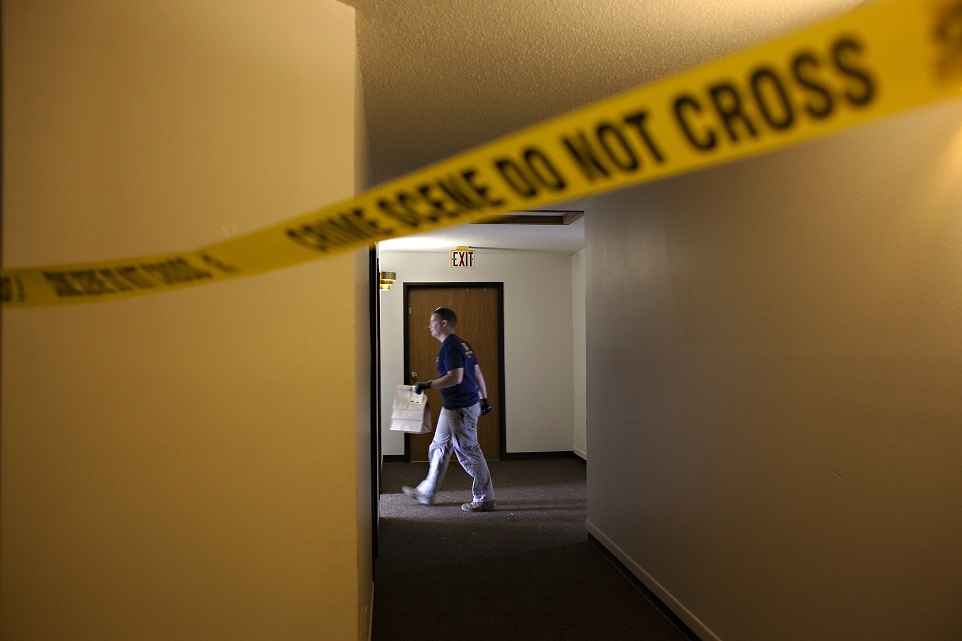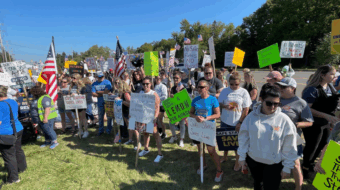
ANN ARBOR, Mich.—As late as a night can get, around 11:50 pm on June 20, Ann Arbor City Council voted on and approved resolution 23-1074. Although reading such a sentence feels akin to calling a time of death, the meaning of this development excites hope for Ann Arbor residents as well as others pushing for a change in policing.
The resolution—of which nearly all council members asked to be co-sponsors—is to issue a request for proposals, or RFP, to begin an unarmed response program in the city. This means that the city of Ann Arbor will partner with a private (more than likely, non-profit) company to handle an unarmed policing alternative to deal with emergency calls.
Prior to the council meeting, the resolution already had support from four council members and Mayor Christopher Taylor. The city itself was already primed for such a proposal when last year—after more than 2,500 residents participated in online surveys and over 250 people attended multiple town halls—City Council approved $3.5 million of ARPA funds to be spent on an unarmed response program. Affordable housing and housing the homeless both won sizable percentages of those funds as well, $3.5 million and $1 million, respectively.
Even Washtenaw County Sheriff Jerry Clayton, although not in support of the resolution, has been one of the leading voices on such issues. Back in 2019, a formal partnership developed between the sheriff’s office and Washtenaw County Community Mental Health allowing a deputy and social worker to respond to “those [911] calls that aren’t really clear.”
If the county is already employing mental health services and working with police to have alternative responses, why contract this work outside the county, city, or state? Also, why does it still matter?
In order to answer these questions, it’s important to understand how the city got here.
Back in April 2021, City Council passed a resolution asking the city administrator to write a report on the feasibility of creating an unarmed response program in the city.
At the root of this work has been the Coalition for Re-envisioning Our Safety, or CROS. CROS is an advocacy group made up of social workers, healthcare professionals, researchers, community builders, activists, faith leaders, and racial justice organizers. The coalition’s focus has been on engaging the community, educating the public about policing, and doing their own research on alternative solutions.
The coalition has since split into two independent branches: CROS on the advocacy side and Care-based Safety, or CBS, on the unarmed response side. Ann Arbor has responded quite well to their work.
“A big part of why we have been so successful has been our organizing,” CROS organizer Hoai An Pham told People’s World. “There was pushback in the beginning on having a separate number from 911, having this be independent from the police department, and having this be an independent group from the city government. These demands are now being met and that’s been in large part because we are community-led and so strongly research-based.”
“After the resolution to do this report was passed, [CROS] got together and decided on a community-led public education effort, so that what the community wants would shape that report,” explained CROS organizer and Eastern Michigan University professor Dr. Kevin Karpiak. “We did our own set of research, we did a survey of existing programs like this around the country to find which features worked and which would be essential to making it successful in Ann Arbor.”
Karpiak added: “We wrote our own report before the city did, around our recommendations and core principles, and then we did a series of focus groups and listening sessions for the communities that are most impacted [by policing] and this shaped our recommendations. When our report was out, we hosted a series of community forums to educate people on the issue, and then the City Administrator wrote a report largely reflecting ours. There were large portions that directly quoted our report.”
That very report, which reflected the coalition’s findings so well, was written by City Administrator Milton Dohoney, Jr., and found its way to the June 20 City Council meeting. It’s important to note the report does acknowledge what types of response the unarmed program would not respond to.
Ann Arbor residents have been overwhelmingly supportive of these efforts as well.
“This has been a community-led demand, Ann Arbor has unequivocally said they want this program, they support this program,” Karpiak said. “That is what pushed the City Council to allocate that money.”
“A testament to the years of organizing and community work that has been done is the fact that 93% of Ann Arbor is in support of an unarmed response team,” Pham added. “We have had thousands of people send emails, sign petitions, call in [to City Council] every single week connecting unarmed non-police responses to so many other issues in Ann Arbor with very personal, very specific ‘If this had been available to me at this point in my life’ stories.”
Whether a call is responded to by the police or a mental health professional, in some cases, tends to hinge on whether that call is deemed violent or not. This seems to be part of the problem with which this all began: How is the situation itself framed before anyone has responded to it?
“People suffering from mental health issues are more likely to be the victims of violence rather than the perpetrators of violence, so framing responses to mental health crises as potentially violent has an inverse relationship to reality,” explained Karpiak.
“There is a need for de-escalation and when the police respond to a call, they are looking for what crime occurred, and then things get violently escalated because there isn’t any unarmed trauma-informed care that is occurring in that emergency situation,” added Pham.
“One of the core features we have been resolute on being important is a separate dispatch number, in part because how calls are interpreted and framed—both by the dispatcher and the responder—really matters. Having that situated within a police dispatch raises several issues—one of those issues is the habitual ways police are trained and get used to framing forms of violence versus how other professionals might do that. So, it’s really important to have a different kind of dispatch than a police dispatch.”
Things are very different 40 miles to the east in Detroit, where late last year City Council and the Detroit Police Department decided to work in tandem toward a mental health response alternative. Not only are there differences in crime rates between the cities and the fact that Detroit’s policing alternative will still be “in-house” to the department, but the support also does not seem to exist yet.
However, Detroiters are left wondering if there is room for that support to begin with given how Mayor Mike Duggan and City Council decided to spend the city’s ARPA funds despite what residents wanted. This doesn’t mean such things are only possible in places like Ann Arbor—or, more accurately, in places not like Detroit and other cities deemed hot spots for crime.
What is interesting about what CROS, CBS, and Ann Arbor are creating here is that it feels like the emergence of dual power but through a public-private partnership. Dual power is when a social or community-based organization steps in to fill the role and add services to the community that the government should be or once did. However, dual power has hit limits in the past in the U.S., and disaster studies have shown that after a crisis or emergency has occurred (like Hurricane Sandy), the community has stepped up to respond to those in need before the state could even begin to mobilize care efforts.
The problem in recent decades is that these efforts have not only been celebrated by public officials, presidents included, but have justified themselves to be the primary response, allowing state departments like FEMA to lag behind or offer little to no support.
Contracting the work to a private non-profit or community-led organization, though, prevents such a program from being at the mercy of public budget cuts, at least directly, while still ensuring some level of funding. On top of this, it gives the notion of public-private partnership a slight twist: In recent years, public-private partnerships have often taken the form of large tech and data corporations partnering with law enforcement and intelligence agencies, announcing themselves as progressive in most headlines. However, an unarmed alternative to policing shows us what these partnerships can offer instead. They can also prove themselves to limit state power.
It’s not enough to say that if we remove profits, the problems go away – in fact, there are numerous examples of non-profit organizations paying their execs absurdly large salaries and those that fail to adhere to their “mission.” The work itself needs to be reimagined.
For example, this very type of policing alternative does not wait for the “disaster” to occur before stepping in to offer care—this kind of work directly intervenes in the violent, “normal” background of the day-to-day to change how we imagine and provide care.
We hope you appreciated this article. At People’s World, we believe news and information should be free and accessible to all, but we need your help. Our journalism is free of corporate influence and paywalls because we are totally reader-supported. Only you, our readers and supporters, make this possible. If you enjoy reading People’s World and the stories we bring you, please support our work by donating or becoming a monthly sustainer today. Thank you!










